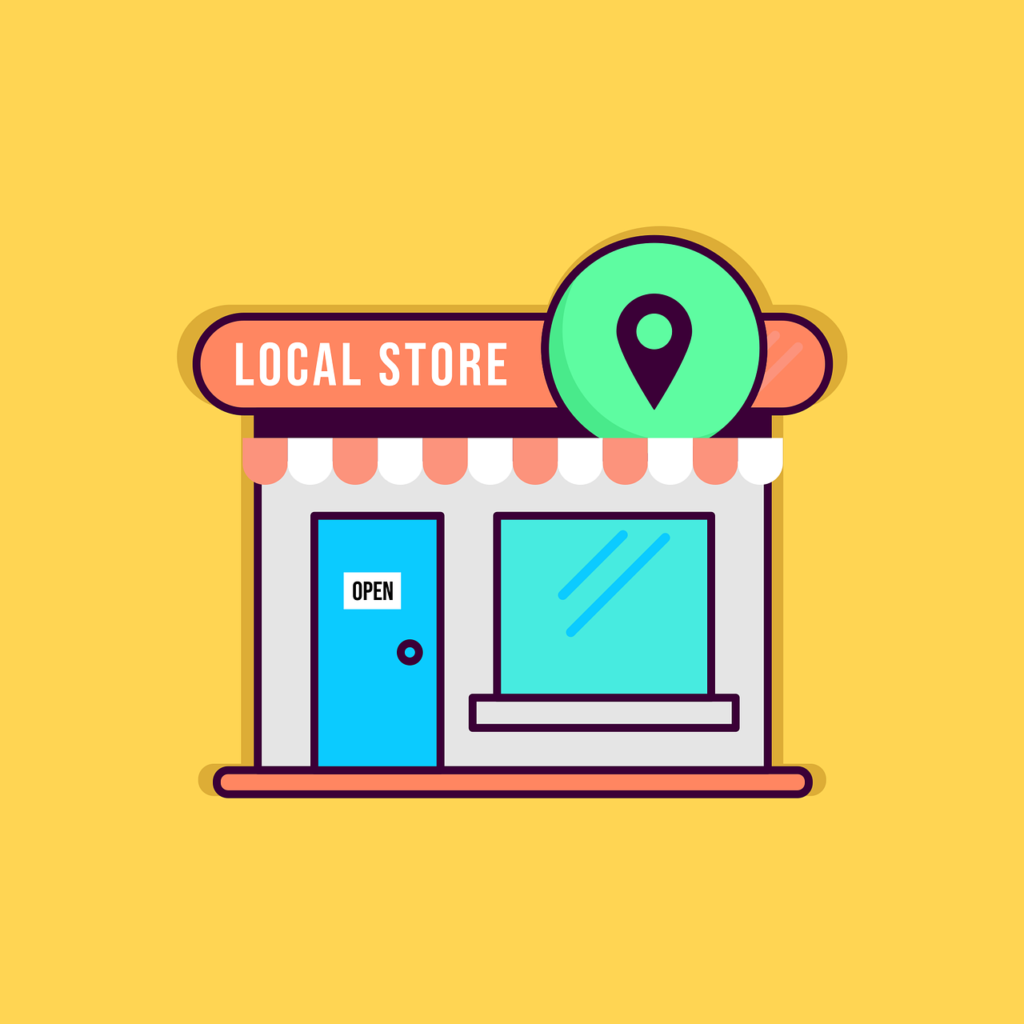This Article has been revised, edited and added to, by Poulomi Chakraborty.
In today’s digital age, local businesses face the unique challenge of standing out in a crowded marketplace while also connecting deeply with their immediate community. Unlike larger corporations, local businesses rely heavily on the trust and loyalty of nearby customers. Content marketing has emerged as a powerful tool for fostering this local engagement. It goes beyond traditional advertising, offering value and building relationships that can transform casual customers into loyal advocates.
Content marketing for local businesses isn’t just about promoting products or services. It’s about telling your story, sharing your values, and engaging with the community in meaningful ways. When done right, it can significantly boost your local presence, drive foot traffic to your physical location, and increase online visibility. This article delves into strategies for effective content marketing tailored specifically for local businesses, focusing on creating a strong community connection.
The Unique Challenges and Opportunities for Local Businesses

Local businesses operate in a distinct environment compared to national or global brands. Their success is intertwined with the local community, making personal connections and local reputation crucial.
While larger brands may focus on broad, national campaigns, local businesses need to hone in on hyper-local strategies that resonate with their immediate audience.
One significant challenge local businesses face is limited marketing budgets. Unlike big corporations that can spend millions on expansive advertising campaigns, local businesses often have to make the most out of smaller budgets.
However, this limitation also brings opportunities. Local businesses can leverage the close-knit nature of their communities, using personal and authentic content to create strong, loyal customer relationships.
In contrast to the mass-market approach, local businesses have the advantage of personalization. They can tailor their content to reflect the local culture, address community-specific issues, and showcase their involvement in local events. This personal touch can create a more meaningful and lasting connection with customers.
Traditional Marketing vs. Content Marketing
To fully understand the power of content marketing for local businesses, it’s helpful to compare it with traditional marketing methods. Traditional marketing, such as newspaper ads, radio spots, and direct mail, often involves a one-way communication where businesses broadcast their message to a wide audience.
While these methods can be effective, they are often expensive and may not provide the engagement and interaction that modern consumers seek.
Content marketing, on the other hand, is about creating valuable, relevant content that attracts and engages your target audience. Instead of pushing a sales message, you offer something of value, such as information, entertainment, or inspiration. This approach fosters a two-way relationship where customers feel heard and valued.
For example, a local bakery could use traditional marketing to advertise a new product in the local newspaper. In contrast, a content marketing approach might involve creating blog posts with baking tips, sharing recipes on social media, and hosting live baking demonstrations online.
This not only promotes the bakery’s products but also engages the community by offering something useful and interesting.
Building Trust Through Content
Trust is a cornerstone of any successful local business. Content marketing is an excellent way to build and nurture this trust. When you consistently provide valuable and informative content, you position your business as a knowledgeable and reliable source in your industry.
This can be particularly powerful for local businesses, where word-of-mouth and community reputation play significant roles.
Imagine a local hardware store that regularly publishes DIY project guides and home improvement tips on their blog. Over time, local customers come to see this store not just as a place to buy tools but as a go-to resource for advice and inspiration. This trust translates into loyalty and repeat business.
Additionally, content marketing allows local businesses to showcase their involvement in the community. Sharing stories about local events, collaborations with other businesses, and community service projects helps to humanize your brand and strengthen your community ties.
Customers are more likely to support a business that shows genuine care and commitment to their local area.
Enhancing Local SEO with Content Marketing
Local SEO (Search Engine Optimization) is critical for local businesses, ensuring that they appear in search results when potential customers are looking for services or products in their area. Content marketing plays a vital role in enhancing local SEO.
Creating location-specific content helps search engines understand that your business is relevant to local searches. For instance, a local gym might publish blog posts about fitness trends in the area, or a local event calendar, or even success stories of local members. Including local keywords naturally in your content, such as the name of your city or neighborhood, can improve your search visibility.
Moreover, content marketing provides opportunities for earning local backlinks. When other local websites link to your content, it signals to search engines that your site is a valuable local resource. This can boost your rankings in local search results, making it easier for potential customers to find you.
Developing a Local Content Strategy

Understanding Your Local Audience
The foundation of any successful content marketing strategy is a deep understanding of your audience. For local businesses, this means knowing the specific needs, preferences, and behaviors of your community.
Start by gathering data on your local market. This can include demographic information, such as age, gender, and income levels, as well as psychographic details like interests, values, and lifestyle choices.
Engage with your community to gain insights. Conduct surveys, host focus groups, and use social media to ask questions and encourage feedback. These interactions can provide valuable information about what your audience cares about and what kind of content they find most engaging.
For instance, a local restaurant might discover that their customers are particularly interested in healthy eating tips and local ingredient sourcing.
Creating Valuable and Relevant Content
Once you have a clear understanding of your local audience, the next step is to create content that is valuable and relevant to them. This content should address their needs and interests while aligning with your business goals.
For example, if you own a local fitness center, your content could include workout tips, nutrition advice, and success stories from members.
Focus on creating high-quality content that provides real value. This can be in the form of blog posts, videos, podcasts, infographics, or social media updates. The key is to ensure that your content is informative, engaging, and shareable.
High-quality content not only attracts and retains customers but also encourages them to share it with others, expanding your reach within the local community.
Leveraging Local Events and News
Local events and news provide excellent opportunities for content creation and community engagement. By aligning your content with what’s happening in your area, you can increase its relevance and appeal.
For instance, a local retail store could create a blog post about the best local festivals and how to dress for them, incorporating their own products into the recommendations.
Stay informed about local events, trends, and news by following community websites, social media pages, and local news outlets. Share updates and insights related to these events, and consider participating or sponsoring local activities. This not only provides fresh content ideas but also demonstrates your business’s active involvement in the community.
Collaborating with Local Influencers
Influencer marketing isn’t just for big brands; local influencers can have a significant impact on your content marketing efforts. These influencers might include popular local bloggers, social media personalities, community leaders, or even satisfied customers with a strong local following.
Collaborate with these influencers to create and share content. For example, a local cafe could partner with a food blogger to create a series of posts about the best coffee spots in town, featuring their cafe prominently. These collaborations can help you reach a wider audience and build credibility within the local community.
Showcasing Local Stories
People love stories, especially when they feature familiar faces and places. Use your content marketing to showcase local stories that resonate with your audience. Highlight customer success stories, employee profiles, and community initiatives.
For instance, a local bookstore might feature a monthly blog post highlighting local authors and their work. This not only provides valuable content but also strengthens your connection with the local literary community. By telling these stories, you humanize your brand and create a deeper emotional connection with your audience.
Using Visual Content
Visual content is incredibly powerful in capturing attention and conveying messages quickly. For local businesses, using photos and videos that feature recognizable local scenes, people, and events can make your content more relatable and engaging.
Create visual content that highlights your business’s involvement in the community. This could include behind-the-scenes looks at your operations, highlights from local events you’ve participated in, or customer testimonials. Share this content across your website, social media platforms, and other marketing channels to create a strong visual presence.
Optimizing for Local SEO
Effective content marketing for local businesses must include a focus on local SEO. This involves optimizing your content to ensure it appears in local search results, making it easier for potential customers to find you.
Incorporate local keywords naturally into your content. These could include the name of your city, neighborhood, or even specific landmarks near your business. For example, a local plumber might create a blog post titled “Top 5 Plumbing Tips for Homeowners in [Your City].”
Ensure your business is listed on local directories and review sites like Google My Business, Yelp, and TripAdvisor. Encourage satisfied customers to leave positive reviews, as these can improve your visibility in local search results. Additionally, create content that answers common questions related to your industry and location, as this can attract local search traffic.
Measuring and Adjusting Your Strategy
Content marketing is an ongoing process that requires regular measurement and adjustment. Use analytics tools to track the performance of your content. Look at metrics such as page views, engagement rates, social shares, and conversion rates to understand what’s working and what isn’t.
Use these insights to refine your content strategy. For example, if you find that your audience engages more with video content than blog posts, consider creating more videos. Stay flexible and be willing to experiment with different types of content and topics to see what resonates best with your local audience.
Implementing Content Marketing Strategies

Creating a Content Calendar
A content calendar is essential for organizing and planning your content marketing efforts. It helps you stay consistent and ensures that you are regularly publishing relevant content.
Start by mapping out key dates and events that are important to your local community and your business. This might include holidays, local festivals, and significant business milestones.
Plan your content around these dates to maximize relevance and engagement. For instance, if you own a local boutique, you might plan a series of posts and promotions around a popular local festival. Use the content calendar to schedule blog posts, social media updates, email newsletters, and other content types.
Engaging Through Social Media
Social media is a powerful platform for local businesses to connect with their community. It allows you to engage directly with customers, share updates, and promote your content.
Choose the social media platforms that are most popular with your local audience. Facebook, Instagram, and Twitter are commonly used, but local businesses might also benefit from platforms like Nextdoor, which focuses on neighborhood-level interactions.
Create a mix of content that includes updates about your business, local news, community events, and engaging visuals. Encourage interaction by asking questions, responding to comments, and sharing user-generated content. Social media contests and giveaways can also boost engagement and increase your reach.
Utilizing Email Marketing
Email marketing remains one of the most effective ways to reach and engage with your audience. For local businesses, email can be used to share news, promotions, and valuable content directly with your customers. Build an email list by encouraging customers to sign up at your store, on your website, and through your social media channels.
Segment your email list to send targeted messages that are relevant to different groups within your audience. For example, a local restaurant might send special offers to regular customers, updates about new menu items to food enthusiasts, and event announcements to the wider community. Use personalized and engaging content to keep your subscribers interested and increase open and click-through rates.
Hosting Local Events and Workshops
Hosting events and workshops is a great way to engage with your community and create valuable content. Events provide opportunities for face-to-face interactions, which can strengthen customer relationships and build loyalty. Workshops, in particular, allow you to showcase your expertise and provide value to your customers.
For example, a local garden center might host a workshop on seasonal planting tips, attracting local gardening enthusiasts. These events can be promoted through your content channels, creating additional content opportunities such as blog posts, videos, and social media updates. Sharing recaps and highlights from these events also keeps your wider audience engaged.
Collaborating with Other Local Businesses
Collaboration with other local businesses can amplify your content marketing efforts and reach a broader audience. Partnering with complementary businesses allows you to cross-promote and share resources, creating a win-win situation for both parties.
Identify local businesses that share your target audience but offer different products or services. For instance, a local coffee shop might partner with a nearby bookstore for a joint event or promotion. Collaborations can include co-hosting events, creating joint content like blog posts or videos, and promoting each other on social media.
Leveraging Local Media
Local media outlets, such as newspapers, radio stations, and community blogs, can be valuable partners in your content marketing strategy. Building relationships with local journalists and media personalities can help you gain coverage and reach a wider audience.
Pitch stories that highlight your business’s involvement in the community, unique products or services, or interesting events. For example, if you’re a local bakery launching a new line of artisan bread, reach out to local food bloggers and newspapers with a press release and an invitation to a tasting event. Coverage in local media not only increases your visibility but also adds credibility to your business.
Using Testimonials and Reviews
Customer testimonials and reviews are powerful tools for building trust and credibility. Encourage satisfied customers to leave reviews on platforms like Google, Yelp, and Facebook. Highlight positive reviews and testimonials on your website and social media channels.
Create content around customer stories and experiences. For example, a local fitness center might share transformation stories of members who have achieved their health goals. These stories not only provide social proof but also create engaging and relatable content that resonates with potential customers.
Incorporating Local SEO Best Practices
Local SEO is essential for ensuring that your business appears in local search results. Optimize your website and content with local keywords, such as your city, neighborhood, and local landmarks. Ensure your business’s name, address, and phone number (NAP) are consistent across all online listings and directories.
Create locally focused content that addresses common questions and needs in your community. This could include blog posts about local events, guides to neighborhood attractions, and answers to frequently asked questions. Building local backlinks from other reputable local websites also enhances your SEO efforts.
Tracking and Measuring Results
To ensure your content marketing efforts are effective, it’s crucial to track and measure your results. Use analytics tools to monitor key metrics such as website traffic, social media engagement, email open rates, and conversion rates. These metrics provide insights into what content is resonating with your audience and what needs improvement.
Regularly review your content performance and adjust your strategy based on the data. For instance, if you notice that blog posts about local events generate high traffic, consider creating more content in this area. Continuously refining your approach based on performance data ensures that your content marketing efforts remain effective and aligned with your business goals.

Overcoming Challenges in Local Content Marketing
Limited Resources
Many local businesses face the challenge of limited resources when it comes to content marketing. Creating high-quality content can be time-consuming and require skills that may not be available in-house.
To overcome this, start small and focus on the types of content that offer the most value for your audience. Repurpose existing content in different formats to maximize its impact. For instance, a blog post can be turned into a video, infographic, and social media posts.
Consider partnering with local freelancers or agencies who can help with content creation. Look for interns from local colleges who are studying marketing, communications, or graphic design. They can provide fresh ideas and help produce content at a lower cost.
Building an Audience
Another common challenge is building an audience for your content. It takes time and consistent effort to grow a loyal following. Promote your content across all your marketing channels, including your website, social media, and email newsletters.
Engage with your audience by responding to comments, asking questions, and encouraging user-generated content.
Collaborate with other local businesses and influencers to expand your reach. Cross-promote each other’s content and events to tap into new audiences. Running contests and giveaways can also attract new followers and increase engagement.
Keeping Content Fresh and Engaging
Maintaining a steady flow of fresh and engaging content can be challenging. Plan ahead with a content calendar to ensure a consistent posting schedule. Stay informed about local events and trends to create timely and relevant content. Encourage customer participation by featuring their stories and feedback.
Experiment with different content formats to keep your audience interested. Combine written content with visuals, videos, and interactive elements. Track your content performance and use analytics to identify what resonates best with your audience. Continuously refine your strategy based on these insights.
Measuring Success
Measuring the success of your content marketing efforts can be complex, especially for local businesses with limited resources. Focus on key metrics that align with your business goals, such as website traffic, social media engagement, and conversion rates. Use free or affordable analytics tools to track these metrics and gain insights into your content performance.
Set clear objectives for each piece of content and regularly review your progress. For example, if your goal is to increase foot traffic, track how many customers mention seeing your online content when they visit your store. Use this data to adjust your strategy and focus on the content types and topics that drive the best results.
Adapting to Changes
The digital landscape is constantly evolving, and local businesses must adapt to stay relevant. Stay updated with the latest trends and best practices in content marketing. Be open to experimenting with new platforms and technologies, such as live streaming, podcasts, and virtual events.
Engage with your community to understand their changing needs and preferences. Regularly seek feedback from your customers and adjust your content strategy accordingly. By staying flexible and responsive, you can continue to provide valuable and engaging content that resonates with your local audience.
Practical Tips for Effective Local Content Marketing

Personalize Your Content
Personalization is key to effective local content marketing. Tailor your content to reflect the unique characteristics of your community and the individual preferences of your customers. Use local references, such as mentioning neighborhood landmarks or local events, to make your content more relatable.
For instance, if you run a local bakery, share stories about where you source your ingredients, highlighting local farms or suppliers. This not only personalizes your content but also strengthens your ties to the community. Use customer data to segment your audience and send personalized emails or targeted social media ads. Personalization makes your audience feel valued and can significantly increase engagement and loyalty.
Focus on Storytelling
Storytelling is a powerful way to connect with your audience on an emotional level. Share stories that reflect your brand values and resonate with your community. This could include the history of your business, the journey of your founders, or the experiences of your customers.
Create content that tells a compelling story from start to finish. Use a narrative structure with a clear beginning, middle, and end. For example, a local pet store might share the story of a rescued animal finding a new home, incorporating photos and videos to make the story more vivid. Engaging storytelling can turn your content from a simple marketing message into an emotional experience that your audience will remember and share.
Utilize User-Generated Content
User-generated content (UGC) is an excellent way to engage your community and build trust. Encourage your customers to share their experiences with your products or services on social media. Feature their photos, videos, and testimonials on your own platforms.
For example, a local gym could create a hashtag campaign encouraging members to share their workout achievements. Highlighting these posts on your social media or website not only provides fresh content but also fosters a sense of community and authenticity. UGC serves as social proof, showing potential customers that others trust and value your business.
Optimize for Mobile
With more people using smartphones to browse the internet and access social media, optimizing your content for mobile is essential. Ensure your website is mobile-friendly, with a responsive design that looks good on all devices. Fast loading times and easy navigation are critical for a positive user experience.
When creating content, consider how it will appear on mobile screens. Use short paragraphs, large fonts, and plenty of white space to make your content easy to read. For videos, ensure they are optimized for mobile viewing, with captions for those who watch without sound. Mobile optimization is crucial for reaching your audience effectively and providing a seamless experience.
Engage with Your Audience
Active engagement with your audience is vital for building strong relationships and fostering community loyalty. Respond to comments on your blog, social media posts, and review sites. Show appreciation for positive feedback and address any concerns or complaints promptly and professionally.
Engage your audience by asking questions, running polls, and encouraging discussions. For example, a local restaurant might ask followers to vote on their favorite dish or suggest new menu items. Regular interaction helps build a sense of community and makes your audience feel valued and heard.
Incorporate Local Keywords
Incorporating local keywords into your content can improve your local SEO and help potential customers find you online. Use tools like Google Keyword Planner to identify relevant local keywords for your business. Include these keywords naturally in your website content, blog posts, and social media updates.
For example, a local hair salon might use keywords like “best hair salon in [City Name]” or “haircuts near [Neighborhood].” Include local keywords in your meta descriptions, image alt texts, and headers to further boost your SEO efforts. Consistent use of local keywords can increase your visibility in search engine results and attract more local customers.
Create Evergreen Content
Evergreen content is content that remains relevant and valuable over time. Creating evergreen content ensures that you have a steady stream of traffic and engagement long after the content is published. Focus on topics that are always relevant to your audience, such as how-to guides, tips, and informative articles.
For instance, a local hardware store might create an evergreen blog post about basic home maintenance tips that can be useful to homeowners year-round. Regularly update your evergreen content to keep it accurate and current. Evergreen content provides lasting value to your audience and continues to drive traffic and engagement.
Monitor and Analyze Performance
Regularly monitoring and analyzing the performance of your content is essential for refining your strategy and achieving better results. Use analytics tools to track key metrics such as website traffic, social media engagement, and conversion rates. These insights can help you understand what types of content resonate with your audience and what needs improvement.
Set specific goals for each piece of content and measure its success against these goals. For example, if your goal is to increase newsletter sign-ups, track the number of new subscribers generated by your content. Use A/B testing to compare different content approaches and optimize for the best performance. Continuous monitoring and analysis ensure that your content marketing efforts are effective and aligned with your business objectives.
Stay Consistent
Consistency is crucial in content marketing. Regularly publishing high-quality content keeps your audience engaged and builds trust over time. Develop a content calendar to plan and schedule your content in advance, ensuring a steady flow of updates.
Maintain a consistent brand voice and visual style across all your content channels. This helps reinforce your brand identity and makes your content instantly recognizable. Consistent effort in content marketing fosters long-term relationships with your audience and supports sustained business growth.
Leveraging Different Content Formats

Blogging for Local Engagement
Blogging is a powerful tool for local businesses to engage with their community and boost their online presence. Regularly publishing blog posts on your website helps to establish your business as an authority in your industry while providing valuable information to your audience.
Topics can range from industry insights and how-to guides to local event coverage and community stories.
For example, a local bakery might blog about baking tips, the history of certain pastries, or profiles of local suppliers. Including local keywords and topics relevant to your community helps improve your local SEO, making it easier for local customers to find you online. Engage readers by encouraging comments and feedback on your posts, fostering a sense of community and dialogue.
Creating Video Content
Video content is highly engaging and can be a versatile addition to your content marketing strategy. Videos can showcase your products, provide tutorials, share customer testimonials, or give behind-the-scenes looks at your business. Platforms like YouTube, Instagram, and Facebook make it easy to share and promote video content.
For instance, a local gym could create workout videos, nutrition advice clips, or member success stories. Live video, such as Q&A sessions or live tours of your business, can also be highly engaging, allowing real-time interaction with your audience. Ensure your videos are high quality and optimized for mobile viewing to maximize their impact.
Utilizing Podcasts
Podcasts are growing in popularity and can be an effective way to reach and engage with your local audience. They allow you to share in-depth content and connect with listeners in a personal and convenient format. Topics can include industry insights, interviews with local experts, or discussions about community issues.
A local bookstore, for example, might host a podcast featuring author interviews, book reviews, and literary discussions. Promote your podcast through your website, social media channels, and email newsletters to build an audience. Engaging content and consistent posting schedules are key to growing your podcast following.
Infographics for Visual Appeal
Infographics are a great way to present complex information in a visually appealing and easy-to-understand format. They can summarize blog posts, present statistics, or provide step-by-step guides. Infographics are highly shareable, making them a useful tool for increasing your content’s reach on social media.
For example, a local health clinic could create infographics about healthy living tips, vaccination schedules, or first aid procedures. Ensure your infographics are well-designed and include your branding to reinforce your identity. Sharing infographics across your website, social media, and email campaigns can drive engagement and enhance your content marketing efforts.
Social Media Stories
Social media stories, such as those on Instagram and Facebook, are short, ephemeral content pieces that can create a sense of urgency and immediacy. Stories are perfect for sharing real-time updates, promoting limited-time offers, or giving behind-the-scenes glimpses of your business.
For example, a local restaurant might use stories to showcase daily specials, share kitchen prep videos, or highlight customer reviews. Stories are highly engaging and encourage viewers to interact through polls, questions, and direct messages. Use stories to create a continuous connection with your audience and keep your brand top of mind.
Email Newsletters
Email newsletters are a direct way to communicate with your audience and keep them informed about your business. They can include a mix of content, such as company news, upcoming events, promotions, and links to your latest blog posts or videos. Personalizing your newsletters based on customer preferences and behaviors can increase engagement and effectiveness.
For instance, a local spa could send monthly newsletters with wellness tips, seasonal offers, and profiles of their staff. Ensure your newsletters are visually appealing and mobile-friendly. Including clear calls to action can drive traffic to your website and encourage conversions.
User-Generated Content
Encouraging and sharing user-generated content (UGC) can significantly enhance your content marketing strategy. UGC includes any content created by your customers, such as reviews, social media posts, or photos. It adds authenticity to your marketing and builds trust with potential customers.
For example, a local clothing boutique might feature photos of customers wearing their products on social media and their website. Running campaigns or contests that encourage customers to share their experiences can generate valuable UGC. Highlighting this content not only provides fresh material but also fosters a sense of community and loyalty.
Interactive Content
Interactive content, such as quizzes, polls, and calculators, can engage your audience in a fun and meaningful way. This type of content encourages participation and can provide personalized experiences for users. Interactive content can also gather valuable data about your audience’s preferences and behaviors.
For instance, a local financial advisor might create an interactive savings calculator or a quiz to determine financial health. Sharing interactive content through your website and social media can boost engagement and provide insights that inform your marketing strategy.
Local Partnerships and Guest Content
Collaborating with local influencers, businesses, and community organizations can expand your reach and enhance your content marketing efforts. Partner with local entities to co-create content, host events, or run joint promotions. Guest blog posts or social media takeovers by local personalities can also add variety and credibility to your content.
For example, a local fitness studio might partner with a nearby health food store for a wellness workshop. Promoting these collaborations through your content channels can attract new audiences and strengthen community ties. Building a network of local partnerships can amplify your marketing impact and foster a supportive local business ecosystem.
Measuring Success and Adapting
To ensure your content marketing efforts are effective, it’s crucial to track and measure success regularly. Use analytics tools to monitor key performance indicators such as website traffic, social media engagement, email open rates, and conversion rates. These metrics provide insights into what’s working and what needs improvement.
Set specific goals for each piece of content and measure its performance against these goals. For instance, if your goal is to increase foot traffic to your store, track how many customers mention your online content when they visit. Use A/B testing to compare different content approaches and optimize for the best performance. Regularly reviewing and adjusting your strategy based on data ensures your content marketing efforts remain aligned with your business objectives and audience preferences.

User-Generated Content, or UGC, is very important to us. It’s not enough to just sell things; we need to give our customers experiences that stick with them. UGC lets us show off our products in real life, which helps people imagine how they would look in their own homes.
To get UGC, we interact with our customers through email campaigns, social media prompts, and personalized follow-ups after they’ve bought something. We offer rewards like special discounts or featured posts on our social media pages to encourage them to share photos and videos of their Langchu lighting installations.
To make UGC bigger, we put money into building communities that make customers want to share their experiences. We also use easy-to-use platforms like Instagram, where customers can tag us and use the right hashtags without any trouble.
To keep track of results, you need to keep an eye on engagement metrics like comments, shares, and likes on user-generated content (UGC) posts, as well as referral traffic and conversion rates from channels that use UGC.
We make our process better by constantly improving our UGC solicitation strategies based on what our customers say and what we learn from our analytics. This way, we can keep getting real content that our audience likes.
Echo Yao, Designer and Co-founder of Langchu Lighting
Conclusion
Content marketing for local businesses is a powerful way to engage with your community, build trust, and drive business growth. By understanding your local audience and creating personalized, valuable content, you can foster deeper connections and loyalty. Leveraging various content formats, such as blogs, videos, podcasts, and social media, allows you to reach your audience in multiple ways.
Consistency and creativity in your content efforts ensure ongoing engagement and relevance. Regularly measuring and adjusting your strategy based on performance data helps you stay aligned with your business goals and audience needs. Embrace the unique opportunities that local content marketing offers to strengthen your community presence and achieve long-term success.
Read Next:
- Harnessing the Power of Video in Your Digital Marketing Strategy
- The Future of Digital Marketing: Predictions for the Next Decade
- Interactive Campaigns: The New Frontier in Digital Marketing
- Digital Marketing on a Budget: Maximizing Impact with Limited Resources
- Harnessing the Power of Video in Your Digital Marketing Strategy





















